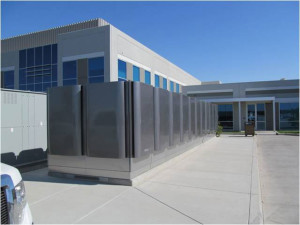Exclusive video: Sustainable practices minimize industry’s environmental impact, boost reputation
Industry is increasingly integrating sustainable concepts into its operations, leaving a positive impact on the communities in which it operates. Dina Kuykendall, director of environmental affairs at Baker Hughes, speaks with Drilling Contractor associate editor Joanne Liou about the importance of sustainable practices and ways the company has reduced its environmental footprint.
By Myna D. Letlow, Dina C. Kuykendall, Chris C. Clodfelter, Baker Hughes
Integrating sustainable building principles into the management of new construction and facility retrofits is an important part of Baker Hughes‘ commitment to sustainability. Buildings that incorporate sustainable features add value by saving on operating costs, reducing the company’s environmental footprint and helping the economy of the local community.
The company’s goal is to reduce resource use, including water, energy and associated greenhouse gas emissions, by 10% year-on-year. Energy audits, technology review, life cycle analysis, geographical infrastructure and an analysis of environmental benefits are all important considerations in developing a management plan.
The company has developed and implemented sustainable building standards based on the definition of sustainable buildings contained in the American Society for Testing and Materials (ASTM) E60 Standard Specifications and the US Green Building Council LEED protocols. Its driving principles consist of site selection and land use; water efficiency; energy management strategies; materials and resources; and indoor environmental quality.

Environmental initiative – Shafter, Calif.
An example of Baker Hughes’ sustainable buildings is its integrated services campus on a 70-acre green field site in Shafter, Calif. The facility, completed in September 2012, was designed to incorporate innovative, environmentally responsible technologies and to maintain harmony with the natural environment. Its energy conservation features include the use of energy-efficient lighting and air-conditioning systems, the application of natural lighting techniques and an alternative energy natural gas fuel cell to provide electricity.
Key features were:
- New energy technology. A natural gas fuel cell developed by Bloom Energy provides electrical self-generation. Using a chemical reaction rather than a combustion process, it significantly reduces greenhouse gas emissions. The fuel cell supplies approximately 60% of the overall load requirements to operate the main office, laboratories and a vehicle maintenance facility. Through a net metering agreement, the utility provider supplies additional power during peak usage hours while excess self-generated power flows back into the utility grid during times of lower usage. The Shafter location is the first industrial site to employ this technology, which was developed for NASA and the US Department of Defense.
- Temperature control. To control temperature, a Mitsubishi City Multi VRFZ heating, ventilation and air-conditioning system using CFC-free refrigerants reduces energy consumption due to load efficiency and the ability to simultaneously cool and heat. Energy can be recovered from one zone and used in another, resulting in increased efficiency and energy savings. In addition, a white thermoplastic polyolefin roofing system offers 90% reflectivity to lower interior temperatures by as much as 35%. The roof insulation is made of 25% recycled material and is 100% recyclable if removed.
- Natural lighting techniques. Maximizing natural lighting with 169 skylights reduces energy consumption in the vehicle maintenance facility and workshop, and windows with PPG Solarban 60 low-emissivity glazing block direct solar heat year-round.
- Energy-efficient lighting. Light sensors shut off 50% of the light fixtures when they sense 50 lumens or brighter, and all offices are equipped with motion sensors so lights turn on only when someone is present. Common areas are controlled by a timer.
- Automated truck washing. A SmartWash Storm Automatic Touchless Vehicle wash system provides for 39% reduction in water and 66% reduction in electrical service at the truck wash. “Multi-gun” hot water, high-pressure washers use a programmable logic controller to sense water demand and heat only the amount needed.
Through the application of sustainable building standards and the installation of the natural gas fuel cell, the Shafter facility is expected to experience significant reductions in energy consumption, carbon emissions, water consumption and, ultimately, operating costs compared with a traditional facility. Electricity cost savings of approximately a half-million dollars per year are expected, or 45% over a standard facility of this size.
Click here to read about how phytoremediation was used to control migration of groundwater plume.




